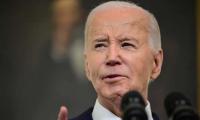Unfortunately, we have three imported coal power plants now with a combined capacity of 3960 MW and a fourth one that has yet to be installed, taking the total to more than 5000 MW.
More than $1.5 billion of foreign exchange is spent in coal imports and is slated to increase. There was no justification of installing so many power plants based on imported coal, except maybe one plant at Karachi or Sahiwal. Moreover, it is argued by some that vested interests (or, to put it mildly, inadequate deliberation) have led to the adoption of inappropriate technology; otherwise alternative technologies could have enabled utilization of local Thar coal on its eventual availability.
Apart from straining foreign exchange resources, these unnecessary plants have created a capacity surplus. There is an interesting, in fact deplorable, situation of excess capacity; if coal power plants are run to full capacity, gas plants remain under-utilized and vice versa. Also, 1000 MW of wind power plant capacities cannot be utilized. And there are issues now of fixing coal prices.
Thermal Power has three components – capital costs; O&M and fuel component. All three components vary with time, but fuel prices vary more; it is impossible to be able to forecast fuel prices and thus fix fuel cost component in a regulated power generation tariff. For fixed cost components, escalation formulae have been provided in the Nepra tariff which, however, went to the other extreme of providing escalation on local and foreign equity component.
In Pakistan, there have been attempts to prescribe formula frameworks for dealing with the variability in fuel prices. Furnace oil fired power plants have operated for more than two decades; the public-sector PSO used to announce furnace oil prices for a long time. It does not import furnace oil anymore and there is no furnace-oil based electricity generation either.
There are furnace-oil plants which, if need be, would operate on locally produced oil. Furnace oil pricing issues would emerge, as private sector price-setting may not be credible for a variety of reasons. There are problems with RLNGCC power plants as to the RLNG cost. As long as the RLNGCC power plants are in the public sector, there may not be problems in the acceptability of RLNG prices. Potential bidders are demanding that the fuel cost component be linked with some sort of LNG spot price index, while cost-plus can be a cart blanche for IPPs and may be controversial.
In case of coal, IPPs are somehow not able to agree on any formula. The first pricing formula was issued in June 2014. The coal reference price formula was announced by Nepra based on the weighted average of three coal price Indices – of South Africa, Indonesia and Australia in a ratio of 20:40:20. The problem is that there are all kinds of coal with varying energy content (CV), while oil or gas have almost fixed CV, although in both cases there is variability in other parameters such as sulfur content etc.
In 2016, some changes in coal pricing formula were made. The weighted average of coal price indices was eliminated and was replaced by an actual applicable index. Nepra managed to draw some conclusions despite wide differences in the inputs provided by the IPPs. Everyone wanted to have a formula according to their perceptions and which would benef their interests.
Reportedly, a consultant was appointed by Nepra to offer some advice in this respect. However, it was decided that the formula would be reviewed after three years, which is due now. As a starter, the issue was preliminarily discussed in a recent energy conference organized by Nepra. Quite amazing and amusing statements were made.
At the conference, an IPP representative said that that his company was running in loss and has by now accumulated losses of $100 million. That was odd – or probably he could not communicate it properly. Maybe it was loss in profit. They are getting a tariff of around 8.5 USc against a typical rate of 5-6 USc almost everywhere on new investments in the UAE, Egypt and elsewhere. Is their net share in profit is too low? This is something our relevant agencies should investigate.
It is quite possible that they may be having losses in buying coal. They might have entered into a large supply contract pooling demand on other projects and may be losing money on that. It is not for the first time that such mistakes in assessment have been made by shrewd and experienced coal buyers. It has happened in India, as mentioned earlier, where several plants of billons of USD investment went stranded due to coal price difficulty. We were expecting some cooperative attitude from coal IPPs for a price opener bringing the cost down to competitive international level. The reverse seems to be happening.
Coal has a market share of 40 percent in global electricity generation. Prices peaked in 2018 crossing $100/t in most markets and have since come down by 25-33 percent .IEA forecasts stable demand and prices in the coming five years. Contrary to popular notions, a coal price collapse does not appear to be on the horizon. Some solution has to be found – a solution which more actually reflects the market and matches the local conditions. Ideally, actual costs are to be paid with some incentives for creativity, enterprise and innovation – easier said than done. There are transparency issues; IPP claims cannot be accepted.
It is wondered if the coal IPPs have some kind of formal or informal arrangement for pooling the coal demand and placing joint orders. They have proposed to Nepra to launch a SPV (Special Purpose Vehicle) for the same. There is a rationale for demand and procurement pooling of small buyers of cement and other sectors. Commercial agents or importers may be doing some kind of pooling. Commercial rivalries normally prevent such coordination.
Reportedly, Malaysia has mandated pooled buying for coal in an arrangement like our TCP, the Trading Corporation of Pakistan. Deliberations should be initiated on the subject of involving the TCP. The TCP can serve a third-party role acceptable to the government of Pakistan and the IPPs. TCP imports many commodities on behalf of the government. IPPs can submit their demands and specs and a common spec platform would have to be agreed to.
Nepra, in its forthcoming suo-motu meeting, may try to develop some required commonalities, although there need not be just one spec; there can be two. Price advantages would be diluted as the number of specs increases. In all probabilities, imported coal power plants will continue to be a burden on consumers and countries’ foreign exchange resources, while Thar coal remains buried where it is. Thar coal has its own sad story.
There is sufficient procurement data available now after three intervening years which should enable objective analysis that may lead to a mutually acceptable formula that reduces generation costs and helps IPPs recoup their genuine costs as well, a win-win indeed is required. Sound professional analysis and advice would be required the likes of which may not be available locally.
The writer is a former member of the Energy PlanningCommission and author of ‘Pakistan’s Energy Issues:Success and Challenges’.
Email: akhtarali1949@ gmail.com
A health worker administers polio vaccine drops to a child during a door-to-door polio vaccination campaign in Lahore,...
Armed militants of the banned Tehreek-e-Taliban Pakistan pose for a photograph in Orakzai Agency. —...
An aeroplane of the national flag carrier of Pakistan is seen in this file photo. — AFPWhile Pakistan considers...
Representational image of a graph depicting various variables. — APP/FileInitiated by the centre and fiercely...
In this picture taken on April 16, 2023, people throng a market area during shopping in Lahore. — AFPOne of the...
Honour crimes also target men. In Sikandar Ali Lashari vs The State, SHC upheld conviction passed by ATC for honour...







